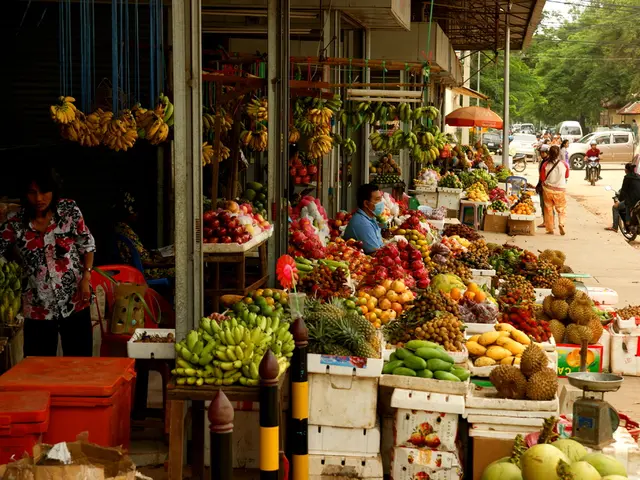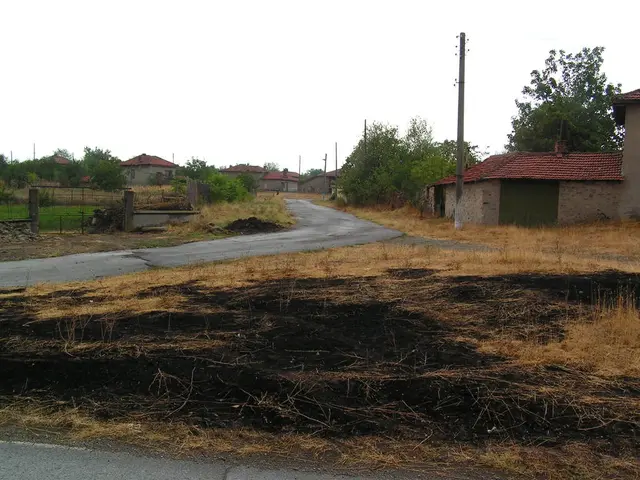Delve into the rich cultural and historical heritage of Puglia with your kids: A handbook for family adventures
Exploring Puglia's Rich History with Children:
For families seeking an enriching and engaging travel experience, Puglia, Italy offers a myriad of child-friendly historical and cultural attractions. These locations blend learning with interactive or physically engaging experiences, transforming history lessons into captivating adventures.
Alberobello: The Magical Trulli Village
A visit to Alberobello, a UNESCO World Heritage Site, is like stepping into a fairy tale. Known for its distinctive dry-stone trulli houses, these unique, limestone buildings feature conical roofs reminiscent of hobbit homes. The bizarre origin story of these structures, built without mortar to evade tax collectors, adds to their allure.
Children will be enthralled by the unusual shapes and secret symbols adorning the roofs. Incredibly, some trulli have been transformed into small museums or artisan workshops, such as the Trullo Sovrano, the only two-story trullo in the city. Alberobello also boasts a small tourist train that traverses the historic neighborhood, providing a welcome break for younger legs.
While strollers may find the irregular stone paths challenging, parking is readily available just outside the historic center.
Otranto & Gallipoli: Castles and Seafront Fortresses
Puglia's coastline is dotted with historic castles, serving as a backdrop for children's imaginations as they envision themselves as knights, pirates, or adventurers.
In Otranto, the imposing Castello Aragonese invites visitors to climb its towers and delve into the true story of invasion and resilience. The castle is also home to the Martyrs of Otranto, 800 local inhabitants who refused to convert and were executed on a nearby hill. Exploring the battlements offers a sense of the region's dramatic history. Younger children will delight in walking along the castle's thick stone walls with views of the sea.
Gallipoli's 13th-century castle, located on the outskirts of the old town, offers a vast space for imagination and discovery, with open walkways, hidden corners, and minimal signage. Safety railings are present, but supervision is recommended, especially with younger children. Both castles have a modest entrance fee and can be visited in less than an hour, making them manageable even for younger children.
Lecce: The Baroque City and Beyond
Often nicknamed the "Florence of the South," Lecce offers treasures for both children and adults, with its rich Baroque heritage. Stroll through the compact city center to admire elaborate architectural facades filled with putti, saints, and floral motifs. The ancient Roman amphitheater in the heart of the city is a hit with kids, who will be amazed to learn that gladiators once fought there.
The Castello Carlo V regularly hosts family events, while a treasure hunt along the city's pedestrian streets offers an entertaining way to engage with the elaborate Baroque facades. Lecce is also renowned for the art of cartapesta, with workshops demonstrating the molding and painting of statues. The Museo dei Bambini di Lecce, a new children's museum, offers practical learning opportunities, interactive exhibits, and a light food area, making it an ideal indoor space for a quiet break or an afternoon of discovery.
Ostuni: A White Labyrinth
Perched on a hill, Ostuni, known as the "White City," is entirely painted white and has narrow streets and stairs that seem like a giant maze. The historic center boasts wide views of the olive groves and Adriatic Sea from the ancient city walls. In the evenings, the main square comes alive with street artists, toy vendors, and food carts. For a fun and relaxing tour, hop aboard a Ape Calessino, a small three-wheeled tuk-tuk, which winds through the city's winding streets. A small playground, Parco Rimembranze, in the new part of the city, offers a play break for families.
Gallipoli: Fish Market and Sea Strolls
Visiting Gallipoli's fish market, best explored in the morning, immerses families in the sights, sounds, and smells of the region's maritime culture. Once one of Europe's major olive oil exporters, Gallipoli's historic center is home to underground mills, offering a glimpse into the city's industrious past.
After the market, families can stroll through the historic center to artisan shops selling ceramics or handmade nets. Children will enjoy walking along the marine bastions, often spotting sunbathers diving into the sea. The Salento Aquarium, a small, engaging attraction featuring Mediterranean marine life, is ideal for younger children.
Many local restaurants welcome families and offer simple pasta dishes along with seafood specialties. Don't hesitate to ask for "pasta al pomodoro" or "simple spaghetti" if that's what your child prefers.
Ancient Messapian Sites: Ruins and Sea Views
For families with older children or teens interested in ancient history, Puglia's Messapian ruins offer a chance to connect with the region's pre-Roman past and are often shrouded in local legends. These sites, including the Grotta della Poesia and Egnazia Archeological Park, provide unique experiences that engage inquisitive minds and spark the imagination. The proximity to the sea also allows for quick dips to cool off amidst history's reminders.
With careful planning, families can discover that Puglia's history isn't just something to learn—it's something to feel, touch, and play with. Whether exploring trulli in Alberobello, creating papier-mâché sculptures in Lecce, or walking through the historic center of Gallipoli, there's a wealth of experiences waiting to be discovered.
In the magical Trulli village of Alberobello, children can not only marvel at the unique architecture but also visit the Trullo Sovrano, the only two-story trullo in the city, which has been transformed into a small museum or artisan workshop. During a family visit to Lecce, the ancient Roman amphitheater serves as a captivating backdrop for history lessons, serving as a playground for imagining gladiator battles of the past.




